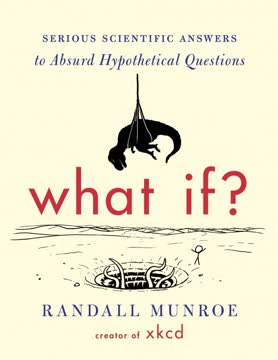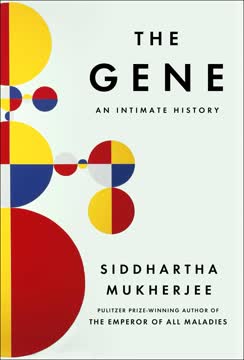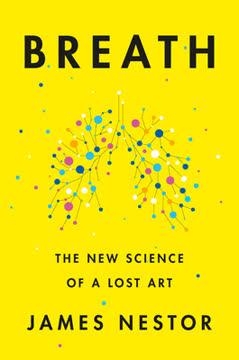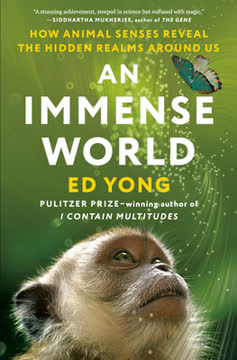Puntos clave
12. La piel: Nuestra barrera protectora e interfaz sensorial
Eres enorme. Tu canal alimentario mide aproximadamente cuarenta pies de largo si eres un hombre de tamaño promedio, un poco menos si eres mujer.
Órgano multifuncional. La piel, nuestro órgano más grande, actúa como una barrera protectora contra el entorno, al mismo tiempo que desempeña roles cruciales en la regulación de la temperatura, la sensación y la síntesis de vitamina D. Es un órgano complejo compuesto por múltiples capas, cada una con funciones específicas.
Funciones clave de la piel:
- Protección contra patógenos y daños físicos
- Regulación de la temperatura corporal
- Sensación de tacto, presión y temperatura
- Síntesis de vitamina D
- Resistencia al agua
Resiliente y regenerativa. La piel se renueva constantemente, con la capa más externa siendo reemplazada por completo cada 2-4 semanas. Esta capacidad regenerativa permite la curación de heridas y la adaptación a las tensiones ambientales. La piel también alberga un microbioma diverso, que juega un papel crucial en el mantenimiento de la salud cutánea y en la protección contra patógenos dañinos.
Última actualización:
FAQ
What's The Body: A Guide for Occupants about?
- Exploration of Human Anatomy: Bill Bryson provides a comprehensive overview of the human body, detailing its structure and functions. The book covers various systems, from the skin to the brain, explaining how they work together.
- Humorous and Informative Style: Bryson combines humor with scientific facts, making complex topics accessible and engaging. His narrative style invites readers to appreciate the intricacies of their own bodies.
- Interconnectedness of Systems: The book emphasizes how different bodily systems are interrelated, showcasing the intricate balance that sustains life.
Why should I read The Body: A Guide for Occupants?
- Unique Perspective on Biology: Bryson offers a fresh take on human biology, blending personal anecdotes with scientific insights, making the subject relatable.
- Educational Value: Readers will gain a deeper understanding of how their bodies function, which can lead to better health awareness and informed lifestyle choices.
- Engaging Storytelling: Bryson's humorous and conversational tone makes complex scientific concepts enjoyable to read, keeping readers engaged throughout.
What are the key takeaways of The Body: A Guide for Occupants?
- Complexity of the Human Body: The book illustrates that the human body is a marvel of evolution, composed of intricate systems that work in harmony.
- Importance of Microbes: Bryson discusses the role of microbes in our bodies, highlighting their significance in digestion and overall health.
- Health Awareness: Understanding how the body functions can empower individuals to make informed health decisions and appreciate their health.
What are the best quotes from The Body: A Guide for Occupants and what do they mean?
- "You are truly a wonder.": This quote encapsulates Bryson's admiration for the human body and its capabilities, serving as a reminder of our extraordinary nature.
- "The miracle of human life is not that we are endowed with some frailties but that we aren’t swamped with them.": Bryson highlights the resilience of the human body despite its imperfections.
- "The only thing special about the elements that make you is that they make you.": This quote reflects on the fundamental nature of human existence, emphasizing our uniqueness.
How does Bill Bryson explain the brain in The Body: A Guide for Occupants?
- Complexity and Functionality: Bryson describes the brain as "the most extraordinary thing in the universe," highlighting its complexity and vast information processing capabilities.
- Energy Consumption: The brain, while only 2% of body weight, consumes about 20% of our energy, showcasing its efficiency.
- Mysteries of Consciousness: Despite extensive research, many aspects of the brain remain mysterious, particularly consciousness and memory.
What insights does The Body: A Guide for Occupants provide about the immune system?
- Defense Mechanism: Bryson describes the immune system as a complex network that protects the body from pathogens, emphasizing its importance in maintaining health.
- Role of White Blood Cells: White blood cells are crucial for immune responses, identifying and attacking invaders, highlighting their significance in our overall health.
- Balance and Functionality: The immune system maintains a delicate balance, ensuring it responds appropriately without overreacting.
How does Bill Bryson address the topic of sleep in The Body: A Guide for Occupants?
- Essential Function: Bryson highlights sleep as a vital process for overall health and well-being, essential for processes like memory consolidation and hormonal balance.
- Sleep Cycles: The book explains the different stages of sleep, including REM and non-REM sleep, and their significance in restorative functions.
- Sleep Disorders: Bryson addresses common sleep disorders, such as insomnia and sleep apnea, and their effects on health.
What does The Body: A Guide for Occupants reveal about the digestive system?
- Complex Process: Bryson describes the digestive system as a complex network that breaks down food and absorbs nutrients, showcasing the intricacies of digestion.
- Role of Microbes: The importance of gut microbes in digestion and overall health is highlighted, noting their role in breaking down food and producing essential vitamins.
- Connection to Health: The book discusses the link between digestion and various health issues, including obesity and diabetes.
How does Bill Bryson explain the significance of skin in The Body: A Guide for Occupants?
- Largest Organ: Bryson emphasizes that skin is the largest organ of the body, serving multiple functions, including protection and sensory roles.
- Self-Repairing Ability: The skin's remarkable ability to repair itself after injury is discussed, reflecting on its aesthetic and functional importance.
- Microbial Ecosystem: Bryson explores the diverse microbial ecosystem present on the skin, illustrating the complexity of our skin's microbiome.
What does The Body: A Guide for Occupants say about the role of diet in health?
- Impact of Nutrition: Bryson emphasizes the importance of a balanced diet for maintaining health and preventing diseases, highlighting the body's resilience despite poor dietary choices.
- Cultural Eating Habits: The book explores how cultural habits influence diet and health outcomes, reflecting on changing dietary practices.
- Connection to Disease: Bryson discusses the link between diet and various health issues, including diabetes and heart disease.
How does Bill Bryson address the concept of aging in The Body: A Guide for Occupants?
- Biological Aging: Bryson explores the biological processes that contribute to aging, including cellular damage and hormonal changes.
- Health Implications: The importance of maintaining health as we age is emphasized, noting that lifestyle choices can significantly influence the aging process.
- Research on Aging: Bryson highlights ongoing research into the biology of aging and potential interventions to improve health in later life.
What are some common misconceptions about the body discussed in The Body: A Guide for Occupants?
- Misunderstanding of Body Functions: Bryson addresses myths about how the body works, such as the belief that we only use 10% of our brains.
- Dietary Myths: The book debunks common dietary misconceptions, explaining the differences between types of fats and their roles in health.
- Health and Longevity: Bryson challenges the notion that certain lifestyle choices guarantee health or longevity, emphasizing the role of genetics and other factors.
Reseñas
El Cuerpo: Una Guía para Ocupantes es elogiado por su exploración atractiva e informativa de la anatomía humana. El ingenio característico de Bryson y su estilo de escritura accesible hacen que temas complejos sean comprensibles y fascinantes. Los lectores aprecian la combinación de hechos científicos, anécdotas históricas y descubrimientos médicos. El libro abarca diversos sistemas del cuerpo, enfermedades y problemas de salud, ofreciendo perspectivas sobre tanto los aspectos conocidos como los desconocidos de la fisiología humana. Aunque algunos lectores encontraron ciertas secciones repetitivas o inquietantes, la mayoría lo recomienda como una lectura iluminadora y entretenida.
Similar Books




















